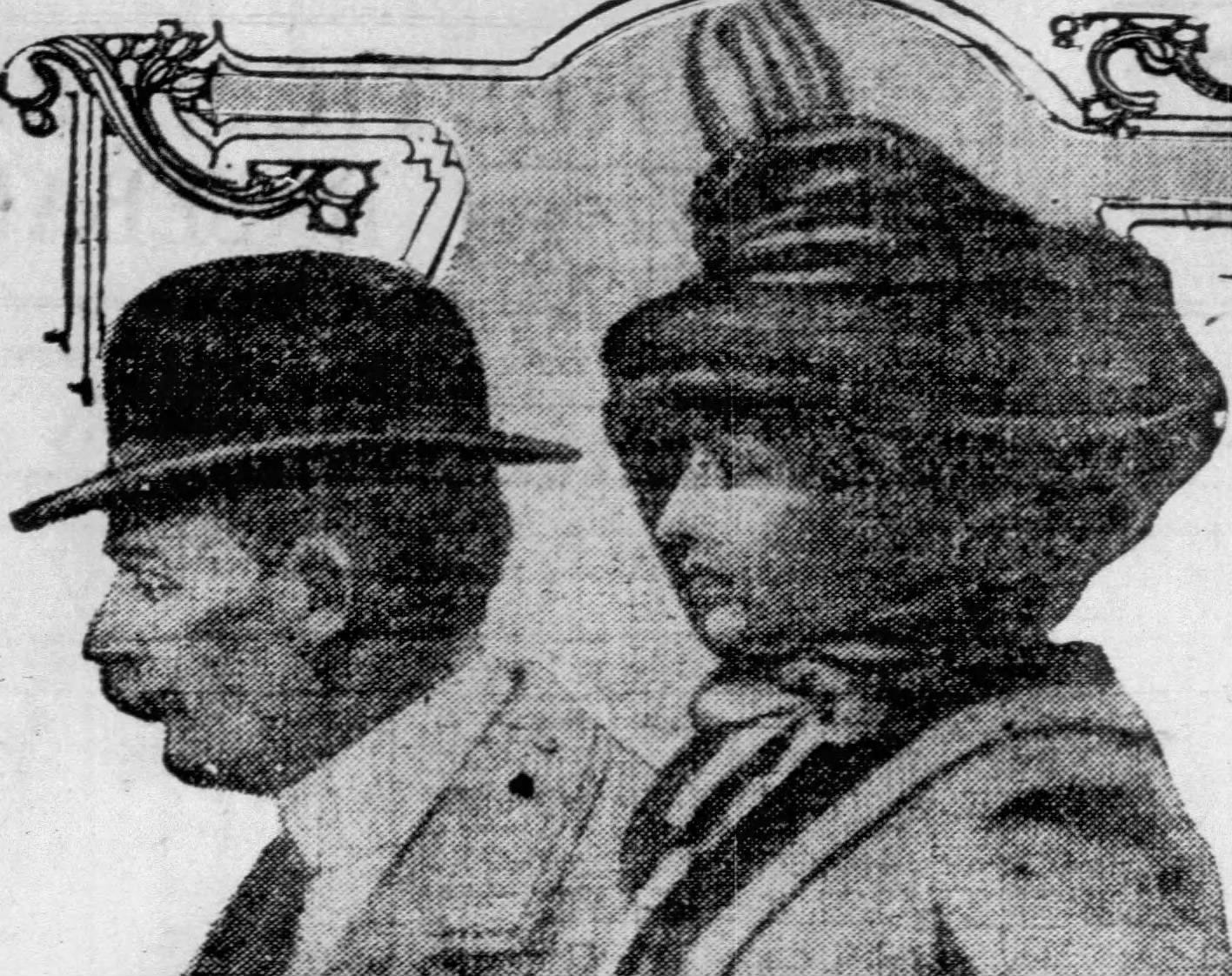This is the third installment of Charlotte Zureick’s four part true crime series, A woman around whom death lingered. If you need to catch up, here are the first and second installments. -SZB
The Investigation
The alleged unknown Black suspect in the near deadly attack on Mrs. Beach in Aiken, South Carolina never materialized. From what I read in the newspapers of the time, the incident happened during the evening when people still would have been outside and nobody mentioned seeing this mystery person. Eventually, Mayor Gyles heard talk that people had seen a man in a gray suit in the Beaches yard that night who was talking to Mrs. Beach. This conversation was rumored to be what led Mr. Beach to assault Pearl Hampton and Mrs. Beach.
Mayor Gyles decided to proceed with an investigation of Mr. Beach. He didn’t believe there would be more than what was on the surface, but after hearing the startling evidence gathered by Detective Baughn of Atlanta, he grew even more suspicious of Mr. Beach:
A knife belonging to Mr. Beach that was given to him previously by the mayor himself was found near the scene of the assault. It was taken for microscopic examination, and three chemists reported that it was stained with blood. A pearl ring and black comb belonging to Mrs. Beach were found in the yard at the side of the house opposite of where Mrs. Beach claimed to be attacked and in agreement with where Pearl Hampton stated she witnessed the assault.
It was also noted that while Mrs. Beach stated the value of the earrings found at the scene at $5,000, they were estimated to be worth about $2.50. These earrings were supposedly the motive for the robbery.
With all of this evidence, Mayor Gyles decided to pursue the warrant for the arrest of Mr. Beach on April 7, 1912, much to the objection of the millionaire colony.
The Trial

Mr. and Mrs. Beach were in Europe at the time the warrant was issued but returned quickly to America landing in New York on April 24, 1912. The trial did not end up happening until February 4, 1913, just short of a year after the attack. It was noted that the Beaches traveled to Maine over the summer prior to the trial. Many people seemed to think the case would naturally be forgotten, but Mayor Gyles was adamant that it would not be let go so easily. It took about twenty minutes to select the jury.
It was noted during the trial that Mayor Gyles had ordered every freight train that boarded near Aiken the night of the attack stopped in order to search for the supposed Black suspect who had escaped. Several Black people in the town itself were arrested in the search for the suspect. Nothing came out of either of these actions.
When reading about the trial in various articles published at the time, it seemed that the whole ordeal was taken as a joke by Aiken society. There were a lot of notes of mockery and laughter during the court proceedings. At one point, the prosecutor himself made a joke in reference to a statement of one of the chemists that he had tried to use a knife on the corpse of a Black man to test the impact of the knife of Mr. Beach as there had been some question about whether it would have been damaged during the attack. The entire court broke out in laughter.
The evidence of the knife and the earrings were discussed. A couple of neighbors testified to hearing Mrs. Beach’s screams. Mr. and Mrs. Beach continued to assert that the assailant was an unknown Black person. Interestingly, it was noted that a police officer said it was actually his footprints that were alleged to be the footprints of the Black suspect escaping.
On February 7, it took the jury about one hour and forty-five minutes to determine that Mr. Beach was not guilty. Essentially, they decided that they couldn’t convict him because Mrs. Beach, the victim, was saying it was not her husband who attacked her. Also, the witness statement of Pearl Hampton had been discounted due to her unwillingness to say much on the attack.
Thoughts on Her Silence
In regards to Pearl Hampton’s decision to keep herself as far removed from this incident as possible, I would like to discuss an article I came across in the Central New Jersey Home News dated December 9, 1912 about the remarks of Cole L. Blease, the governor of South Carolina at the time:1
“At the governors’ congress in Richmond, Va., Governor Blease of South Carolina declared that he favored the lynching of negroes for assaults upon white women. In the course of his remarks, he said that he wished it understood then ‘when a negro assaults a white woman all that is needed is that they get the right man, and those who get him will neither need or deserve a trial.” The reporter criticized the governor’s position, stating that the problem with lynching was that it often did not identify the right man because there was no due process.
At the time of the attack in 1912, lynchings were legal in South Carolina. The NAACP, founded just three years prior in 1909,2 defines lynching as the public killing of an individual who has not received any due process. These executions were often carried out by lawless mobs, though police officers did participate under the pretext of justice. These were violent public acts that white people used to terrorize and control Black people in the 19th and 20th centuries, particularly in the South.3
I recently read about Ida B. Wells, a Black woman who lived in these times and wrote investigative journalism about lynchings in the South. It was often the case in lynchings that not only suspects of crimes, who were often wrongly accused, were pursued but also people who just happened to be at the wrong place, wrong time and got wrapped up in white people’s affairs, like Pearl Hampton did that night.

Considering this, I think that it is very understandable that Pearl Hampton would choose to speak as little as possible in this situation. It was really eye opening how this woman was arrested after being not only a witness but a victim to this attack. The newspaper articles never even acknowledged her as a victim, I only found this out due to her own witness statement in one of the articles. Pearl Hampton, being relentlessly pursued by the press, had stated that the whole affair had nearly torn her to pieces and it was noted that she had sobbed during the interview. The whole incident clearly must have been extremely frightening for her. I wonder if behind closed doors Pearl Hampton ever told her family or friends more about what really happened that night, and if anyone to this day might know the true story. Above all, I am glad that she was finally left alone.
It was reported that at the end of the trial the powerful circle of millionaire friends surrounded Mr. Beach. His friends were noted to be visibly emotional at the not guilty verdict. I thought it was interesting that in all of the articles I read about the attack there was rarely mention of much concern for Mrs. Beach or the general safety of the Aiken community. The outrage and concern seemed to center around the fact that the mayor would have the audacity to investigate Mr. Beach. I think these men were not used to dealing with any questioning or consequences, so seeing one of their own investigated sent them into a communal frenzy.
I also was amazed to find out that this was not the first time Mrs. Beach had been involved in a mysterious incident. In the next part, we will look at the death of her first husband, Charles Frederick Havemeyer.
“Logic That Limps,” The Central Jersey Home News, 9 December 1912, p 6.
NAACP, “History of Lynching in America,” NAACP.org.






